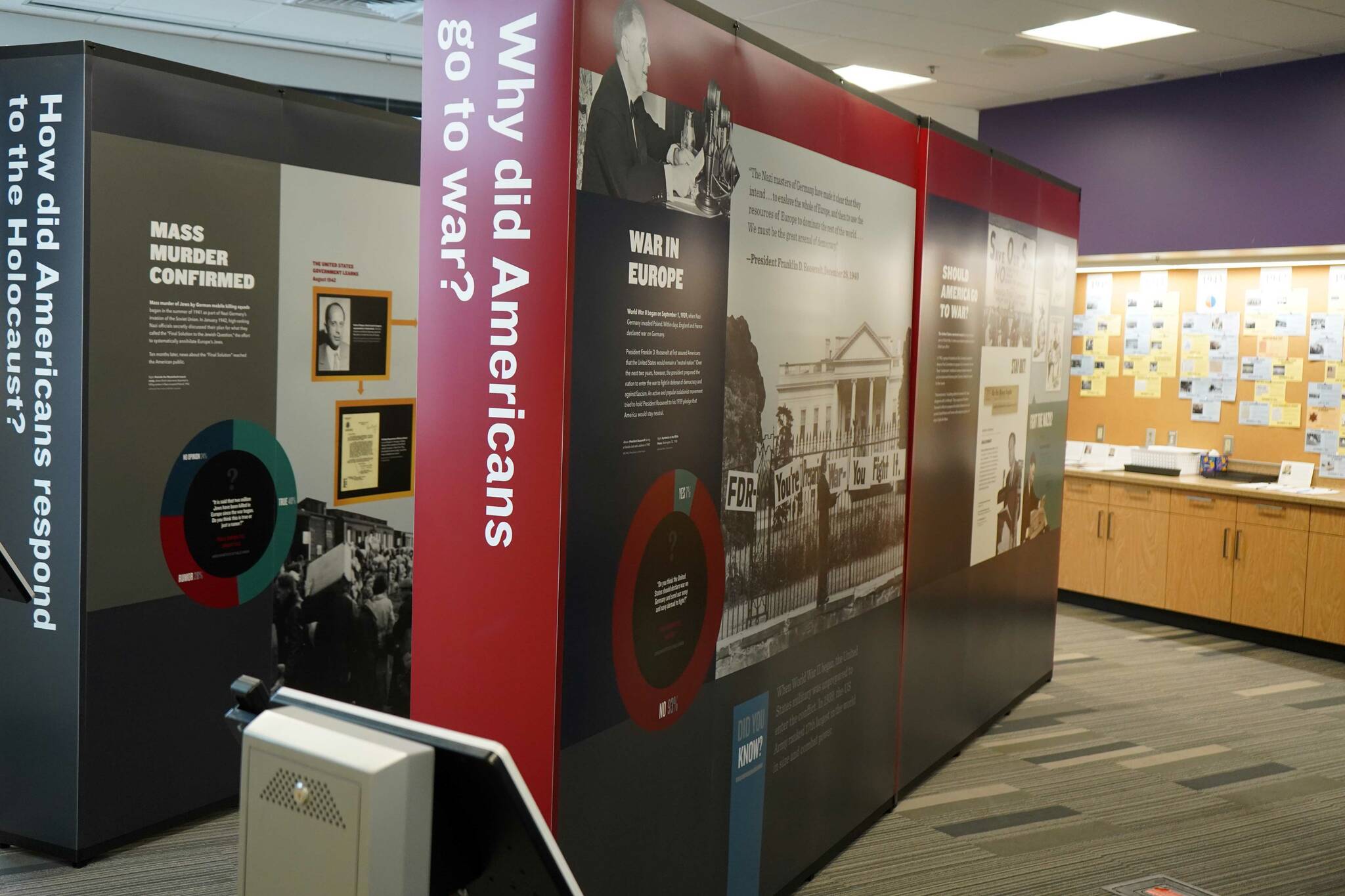At the Seward Community Library and Museum this month, a traveling exhibit titled “Americans and the Holocaust” sheds light on how, when and what Americans learned of the Holocaust during the 1930s and 1940s. Seward’s is the first of 50 libraries in the nation to receive the exhibit over the next two years.
Library Director Sue Drover said Thursday, Sept. 12, that the library is hosting an array of events and field trips to share the learning experience with as many in the local community and Alaska as possible.
The exhibit, she said, came to Seward on a grant from the American Library Association. It’s a partnership between the association and the U.S. Holocaust Memorial Museum.
The purpose, she said, is to explore misinformation and the flow of information to Americans at the time of the Holocaust, specifically in the ways those colored American opinions and actions during that period.
An optional survey at the end of the exhibit asks attendees if they had any preconceived notions going in, and if those had changed. Drover said the responses have been largely centered on contemporary opinion polling numbers presented throughout the exhibit, citing data from the American Institute of Public Opinion.
A pair of polls in November 1938 show that 94% of Americans “disapprove of the Nazi treatment of Jews in Germany,” but only 21% favored allowing more Jewish refugees to immigrate to the United States. Another, in January 1943, shows that only 48% of respondents believed that a reported death toll of 2 million in the Holocaust was true.
“There was a disconnect,” Drover said. “Between getting the information, deciphering what it really meant, and then taking action and understanding what the action would create or cause.”
The exhibit shows that especially because of post-World War I isolationism, many Americans recognized that something awful was happening, but didn’t want to be the ones to help, Drover said.
Throughout the run of the exhibit in Seward, which began in August, the library has hosted programs to explore beyond the confines of the exhibit.
Rebecca Erbelding, a historian from the U.S. Holocaust Memorial Museum, gave a presentation on the Alaska Plan — which would have brought European Jewish refugees to Alaska but never passed. Another program explored the experiences of athletes in the 1936 Berlin Olympics and the parallels of systemic racism between Nazi Germany and the Jim Crow South. On Wednesday, the library hosted a look at what was happening in Seward and Alaska during the period, looking through contemporary newspaper clippings and photographs.
Because of Alaska’s size, Drover said they recorded a virtual field trip video to share, alongside other teaching resources, with school districts across the state. That video is still being edited, but Drover said they soon will be sharing the experience more widely.
The exhibit has already seen and lined up visiting school field trips from around the Kenai Peninsula Borough and beyond. Drover said that, because of the cruise ships visiting Seward, they’ve had people from all over visit the library and take in the exhibit. The visitor log on Friday listed people from New York, Texas, Wyoming, Missouri and England.
“Americans and the Holocaust” can be viewed at the Seward Community Library and Museum through Oct. 8. More information about the exhibit or other programming can be found at “Seward Community Library & Museum” on Facebook.
Reach reporter Jake Dye at jacob.dye@peninsulaclarion.com.

